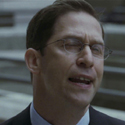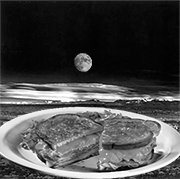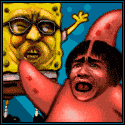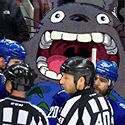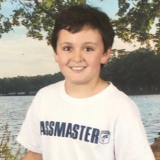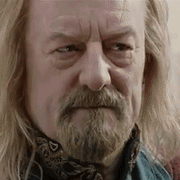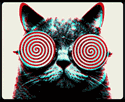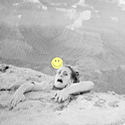|
There are a number of reasons that my above recommended approach is how I have come to work in the last year or so (though I typically do inversion and color balancing in FlexColor from 3F's). I'm come to discover that using curves, rather than levels, for the initial color correction is an exercise in pain,setting up the picture for difficulty later. Because curves allow us to set arbitrary and almost inherently non-logarithmic gamma curves using Beziers, even if our manual work is quite close to ideal there are subtle and unobservable cross overs introduced which are extremely difficult to eliminate, and show up after the initial color corrections when we go to punch the image up. In most cases people will reach for layers which work in HSV (Hue/Sat for example) to try and fix it, which then really brutalizes your colors, and then also layer masks which brutalizes the time spent just doing color. Setting up the layers like that, though not necessarily in that order, provides the fewest number of parameters to have full control the aspects of color, brightness, and contrast that I look for first when getting to a base image. After that is when compositing or locally adjusting things (in this case maybe, punching up shadows on the leaves and flowers) comes into play. I say "fewest parameters for full control", and yeah nine or twelve points on one curves layer is fewer points than fifteen or eighteen on three levels layers, but levels are much more oops resistant, and have those normalization sliders for the max/min on every channel (which is more difficult to do as nicely on curves layers, because we can't enter numeric values for endpoints and the dialog box is not that big). The self-filtering qualities of the blending modes and those max/min on the luminosity channel work very well together, and provide much more flexibility than ACR/lightroom/whatever recovery sliders, while also being less hassle than curves. MrBlandAverage is completely right, illumination is different for every shot, but so too are film batches, your home lab's chems and temps, the pro lab's chems and the mix of stuff they're processing that day, and who knows what else. I made the above image, and many others, with the idea to create some reusable settings (or icm's for my scanner), but it is totally a waste of time, and having a systematic approach to start fresh with each image is the way to go. I suggested 20 minutes because getting familiar with the subtle interplay between the adjustments that can be made on different levels, how hue rotations are introduced through brightness adjustment (even on allegedly neutral adjustment axes), and general experimentation/exploration. For this example I spent less than five minutes, but when people are paying me I spend at least fifteen before I dust, and it goes over to the bigshot for compositing and other heavy work. I'm absolutely not saying that anyone needs to obsess as much as I do about the color in a color photograph, but that over the years I've come to see that the single key ingredient in a great looking photograph is the sum of thousands of details, and getting everything right takes its own time.
|
|
|
|

|
| # ? May 11, 2024 14:34 |
|
fail son rebate posted:There are a number of reasons that my above recommended approach is how I have This is the stupidest thing I've ever read. Your image sucked, btw - huge light leak, it's underexposed (what happened to your shadows?) and you're using a color card set above a blue surface that's bouncing blue light onto it.
|
|
|
|
ansel autisms posted:Step 1: shoot slides Ektar's better, really.
|
|
|
|
ansel autisms posted:This is the stupidest thing I've ever read. Your image sucked, btw - huge light leak, it's underexposed (what happened to your shadows?) and you're using a color card set above a blue surface that's bouncing blue light onto it. sorry my sucky camera sucks? the shadows are there, that's why i said you can't trust the grey scale.
|
|
|
|
Ektar's garbage, but considering what you think a good color corrected image looks like I'm entirely unsurprised that you have another bad opinion.
|
|
|
|
fail son rebate posted:sorry my sucky camera sucks? the shadows are there, that's why i said you can't trust the grey scale. You don't know how to expose Portra 160 correctly.
|
|
|
|
ansel autisms posted:You don't know how to expose Portra 160 correctly. I was really hoping for more poo poo talk about other throw away images I'd posted,
|
|
|
|
lol i just press butttons
|
|
|
|
fail son rebate posted:There are a number of reasons that my above recommended approach is how I have This is amazing. You made a relatively simple problem really complicated despite using tools that are too clumsy/nonspecific for what you're using them for (levels instead of curves) and which don't eliminate the crossover issues you're worried about. Also, you don't need to put your own line breaks - browsers do that for you. Are you off your meds or something?
|
|
|
|
Mrenda posted:lol i just press butttons I fiddle for 5 minutes then let you guys tell me when my badly framed dadshots have weird color shifts. A perfect process.
|
|
|
|
MrBlandAverage posted:This is amazing. You made a relatively simple problem really complicated despite using tools that are too clumsy/nonspecific for what you're using them for (levels instead of curves) and which don't eliminate the crossover issues you're worried about. Also, you don't need to put your own line breaks - browsers do that for you. Are you off your meds or something? But, it doe s elimina te the probl em of cros s-over, that' s the whole point. Simpl icity is defi nitly in the e ye of the beh older when you're five la yers deep an d see somet hing you don 't like.
|
|
|
|
pres s but tons 4 20 er ry da yyy!
|
|
|
|
fail son rebate posted:But, it doe a) no it doesn't b) low effort troll, 2/10
|
|
|
|
Mrenda posted:pres same Flattened Spoon posted:15% off film bodies from keh today for those who care. Sweet, thanks
|
|
|
|
Urge to Pentax 67 rising.
|
|
|
|
Yo KEH, it sure would be awesome to be able to add things to my cart while you're doing this sale.
|
|
|
|
I don't even scan as a positive unless negafix doesn't get me close in silverfast #yolo
|
|
|
|
ansel autisms posted:You don't know how to expose Portra 160 correctly. Do you have any tips? (Serious post)
|
|
|
|
Ettr
|
|
|
|
I understood like maybe the first 3 lines of that oddly line-broken post.Spedman posted:Do you have any tips? (Serious post) also this
|
|
|
|
Spedman posted:Do you have any tips? (Serious post) Shoot Portra 400 or expose as it if was ISO 80, I've shot boxes and boxes of 160 and it's an immensely frustrating film if you don't rate it slower than box.
|
|
|
|
I feel like I've got c41 development down pretty well, using the Tetenal kit. Timing and temperature are fairly easy to manage with a digital thermometer and watch, and the whole process is seemingly more straightforward and consistent than b&w dev (which leaves a lot of purposeful wiggle room, and has a huge variety of developers and techniques). Is E-6 any harder than c41? Do the chemicals hold up as well over time and with repeated use? Edit: and are there any current slide films that look as nice and handle overexposure as well as Portra 400? (I'm guessing 'no' to the latter.) SMERSH Mouth fucked around with this message at 01:07 on Feb 6, 2016 |
|
|
|
SMERSH Mouth posted:I feel like I've got c41 development down pretty well, using the Tetenal kit. Timing and temperature are fairly easy to manage with a digital thermometer and watch, and the whole process is seemingly more straightforward and consistent than b&w dev (which leaves a lot of purposeful wiggle room, and has a huge variety of developers and techniques). Is E-6 any harder than c41? Do the chemicals hold up as well over time and with repeated use? I just started doing E-6 myself, and it's just as easy. Basically just 1 extra step. I don't think slide film handles over exposure well at all.
|
|
|
|
I'll probably start out sticking with 35mm then, because I'm really not sure how accurate any of my MF gear's shutters are. Do they even make Astia anymore? And goddamn, slide film is pricy. 120 is cheaper than 35mm, too.
|
|
|
|
SMERSH Mouth posted:Do they even make Astia anymore? Sadly they don't anymore 
|
|
|
|
ansel autisms posted:Shoot Portra 400 or expose as it if was ISO 80, I've shot boxes and boxes of 160 and it's an immensely frustrating film if you don't rate it slower than box.
|
|
|
|
Xabi posted:Do you also shoot Portra 400 as if it was ISO 200? http://ukfilmlab.com/2014/04/24/film-stock-and-exposure-comparisons-kodak-portra-and-fuji/ Portra 400 has a 6-stop range where -2 doesn't look all that different from +4. Compare that with Portra 160, which looks kind of muddy and sad at -2 stops.
|
|
|
|
SMERSH Mouth posted:Do they even make Astia anymore? Astia got the axe in 2011, though it had been pretty hard to find for a while before that. It's worth getting a few rolls if you can find them. I've still got a decent-sized stash, and ran a neat Astia giveaway Goon Project, but that... only mostly worked.
|
|
|
|
mulls posted:http://ukfilmlab.com/2014/04/24/film-stock-and-exposure-comparisons-kodak-portra-and-fuji/
|
|
|
|
Last year I shot Portra 400 at the rated ISO, and I have a hard time metering storms anyways, but I saw a lot of underexposed shots and the grain on 35mm was much more noticeable. I'm going to try shooting at 200 this year - from my testing, things look much better (I'm also shooting 6x7 which helps). It's difficult to ignore years of worrying about blowing out highlights with digital, though. Underexposed grainy example:
|
|
|
|
Xabi posted:Do you also shoot Portra 400 as if it was ISO 200? I shoot it at 400, it doesn't seem to have the ridiculous loss of shadow detail at box speed that 160 does. If you're concerned you could shoot it at 200 without any ill effects.
|
|
|
|
Xabi posted:Yeah, I know but I've seen several places people recommending to overexpose 400 by shooting it as 200 or 320 for best results. It might be minor differences but I'm curious how Mr Ansel is doing it. I've seen people talk about overexposing portra 400 because they like the way colors get a little washed out from overexposure. Haven't seen people talk about needing regular exposures to be overexposed.
|
|
|
|
I've shot Portra 400 at box speed and @ 200 and the conclusion I came to is that I am garbage at photos either way.
|
|
|
|
BANME.sh posted:I've been experimenting with photoshop actions to speed up the color correcting process for my scans. I got it down to a pretty reliable set of actions that gets me within 99% of the final image most of the time. Works really well for slides, too, provided you manually invert the image first. On that note, I'd really suggest removing the Invert layer from the action and just manually inverting the image first. Cuts down on file sizes and makes it easier to run the action on slides / TIFFs I've already manually inverted.
|
|
|
|
Thanks, glad you found it useful. You can easily just uncheck the invert action or simply delete it instead. I flatten my images when I'm done photoshop work because I figure I can just rescan the negative if I want to start from scratch again, but I understand you might want to save the tiff with the layers in tact.
|
|
|
|
I'm going to want to shoot MF wide open outside next summer, should I get a ND filter or overexpose Portra 400 and give no fucks ?
|
|
|
|
Depends on the max shutter of your camera? If it tops out at like 1/500 you're probably going to need an ND filter to shoot completely open.
|
|
|
|
unpacked robinhood posted:I'm going to want to shoot MF wide open outside next summer, should I get a ND filter or overexpose Portra 400 and give no fucks ? This actually does sound like a use case for Portra 160, if you have enough light to rate it at 80 or 100.
|
|
|
|
MrBlandAverage posted:This actually does sound like a use case for Portra 160, if you have enough light to rate it at 80 or 100. Isn't portra 160 a bit more finicky than 400 though ? re: ND filters, prices are all over the place. Am I going to be fine buying a 10$ no name one on ebay if I shoot 400 ? Yeah my camera tops at 1/500
|
|
|
|

|
| # ? May 11, 2024 14:34 |
|
fwiw I have a camera that tops out at 1/400 and I have had to use a 2 stop ND filter with Portra 400. To shoot at f2.8 I'll usually get a reading of somewhere between 1/1000 and 1/2000 in direct sun.
|
|
|



